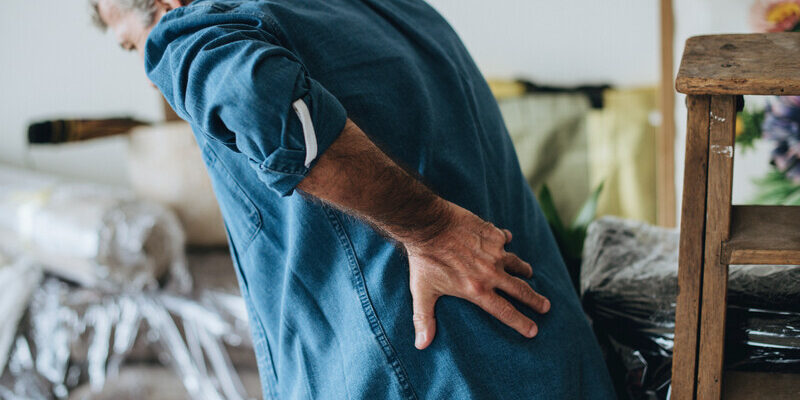Spinal stenosis happens when the spaces in the spine narrow and create pressure on the spinal cord and/or nerve roots. This most commonly occurs due to wear and tear of the spine from aging, but some people can be born with it. This can occur at any level of the spine, but it is most commonly seen in the neck or lower back in people over 50.
Symptoms vary depending on the area of involvement and compression, including neck or back pain, arm or leg pain with numbness, sciatica, cramping in the legs or feet, and weakness of the arms or legs. Pain can be increased with walking or bending backwards and relieved sitting or flexing the spine forward. Leaning forward opens the spine spaces—reducing compression of the nerves and thus the pain. People with more severe stenosis may encounter issues with bowel, bladder or sexual function.
The most common causes of spinal stenosis are arthritis and disc herniations. Less common causes can include tumors of the spine, spinal fractures or spinal cysts. Diagnosis of spinal stenosis is typically made by a physical examination as well as an X-ray, CT scan or MRI scan.
Treatments of spinal stenosis include:
- Self-help remedies under a doctor’s guidance such as application of heat or cold packs and exercising.
- Conservative care such as physical therapy, chiropractic care, oral medications and acupuncture.
- Minimally invasive procedures including epidural steroid injections in the spine, insertion of a spinal spacer (increases space between compressed nerves) and removal of overgrown ligaments.
- Spinal surgeries to remove excess overgrown bone and ligaments. This creates more space in the spine and decompresses the pinched nerves to relieve the pain. Some procedures include a laminectomy, laminotomy or foraminotomy. Most people who have spinal stenosis do not need surgery, but surgery would be considered necessary when symptoms are intolerable, there is spinal cord compression, or there is loss of balance, bowel or bladder functio
Preventing spinal stenosis:
Some things you can do to prevent or minimize spinal stenosis from occurring include:
- Eat a healthy diet and keep your weight low
- Do not smoke
- Maintain good posture
- Don’t sit all the time – get up and move at least once an hour
- Exercise regularly
David BenEliyahu, DC, FICC
Administrative Director, Back & Neck Pain Center at Mather Hospital

